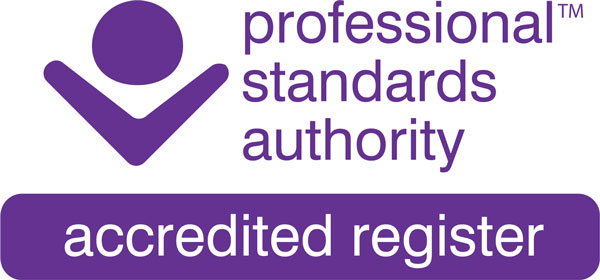The rewind technique
THE rewind detraumatisation technique taught by HG College for over 20 years is a non-intrusive, safe and highly effective psychological method for neutralising the high emotional arousal which can stay with people long after traumatic experiences are over. The same method can be used just as effectively for curing phobias. It should be carried out by an experienced practitioner.
Our method is a refined version of a technique developed by Dr David Muss, who himself built on a technique developed by Richard Bandler, one of the founders of NeuroLinguistic Programming (NLP). Bandler called his method the visual/kinaesthetic dissociation protocol1 and Muss named his the rewind technique.2
The human givens version was refined by Joe Griffin and Ivan Tyrrell, co-founders of the human givens approach, to make it as reliably effective as possible. They did this by aligning the method with understandings from neuroscience about how trauma is processed in the brain. HG therapists follow a specific Rewind Protocol, using the essential steps of the process that Griffin and Tyrrell set out.
These include the requirement that, before carrying out the technique, human givens practitioners put clients into a state of deep relaxation. This is considered essential to prevent any risk of deepening the emotional trauma pattern instead of neutralising it.
Human givens practitioners will also ensure that the trauma template is activated – meaning that they check that the trauma memory is being re-experienced at an emotional level at the time that the treatment is being carried out. The method cannot work if someone is emotionally cut off from their experience, which is often an unconscious protective mechanism. Unless people are so traumatised that they have dissociated from their experience altogether, a skilled therapist can, when necessary, reconnect clients with the associated emotion very quickly, and, depending on at what stage this needs to be done, proceed to relax them deeply or else return them to full relaxation.
 Once fully relaxed, clients are guided to imagine themselves in a pleasant place and, through a series of specific steps, are led to see or sense the traumatic event, or episodes when the phobia was most frightening, as if on a film, through which they can fast-forward and rewind at immense speed, using their remote control.
Once fully relaxed, clients are guided to imagine themselves in a pleasant place and, through a series of specific steps, are led to see or sense the traumatic event, or episodes when the phobia was most frightening, as if on a film, through which they can fast-forward and rewind at immense speed, using their remote control.
All this is repeated back and forth, at the highest speed that feels comfortable, and as many times as needed, till the scenes evoke no emotion from the client. If the feared circumstance is one that will need to be faced again in the future — for instance, driving a car or using a lift — the person is >guided, while still relaxed, to visualise themselves doing so confidently.
Besides being safe, quick and painless, the technique has the advantage of being ‘non-voyeuristic’. Intimate or painfully upsetting details do not have to be disclosed. This reduces the distress for the client, and also helps protect the therapist from the possibility of being vicariously traumatised themselves when detraumatising particularly disturbing events.
Evidence for the rewind technique
In 2023, the first randomised controlled trial (RCT) of the rewind technique, as practised by its founder, Dr David Muss, was published in a medical journal. It found that the rewind, delivered in this case remotely via video, showed “a large effect size in treating symptoms of PTSD” in the participants and suggests that “one to three sessions of rewind demonstrate potential as a more time- and cost-efficient trauma-focused intervention than CBT-TF [trauma-focused cognitive-behavioural therapy] and EMDR [eye movement desensitisation and reprocessing] but with a similar effect size”. 3
Unlike in the refined version of the technique in which HG practitioners are trained through Human Givens College, participants in the trial were not put into a state of deep relaxation before starting the rewind. As explained above, we consider this a crucial additional element of the version we offer, which has a high success rate.
Case History: Finding Peace at Last
References
- Bandler, R (1985). Using Your Brain for a Change. Real People Press, Moab, UT.
- Muss, D (1991). A new technique for treating post-traumatic stress disorder. British Journal of Clinical Psychology, 30,1, 91–2.
- Wright, L A, Kitchiner, N et al (2023). Rewind for posttraumatic stress disorder: a randomized controlled trial. Depression and Anxiety, doi: 10.1155/2023/6279649
Further learning
Human Givens College offers a variety of related courses.
In-person courses:
The Rewind Technique: Effective treatment for trauma (PTSD) and phobias – 2-day workshop
Guided imagery and visualisation for therapeutic change – 1-day workshop
Online courses:
Understanding Trauma – with Ros Townsend.
Grief and Bereavement – Understanding loss and the best ways to help.
Live online courses:
Essential Trauma Training – an in-depth look at the causes, symptoms and best ways to treat trauma and PTSD, a live workshop with Ros Townsend.
Complex Trauma: working effectively with challenging cases – Live online training with Ros Townsend, covering the unique challenges of working with complex trauma cases, including shutdown and dissociation.
Moral Injury – deepen your understanding of its causes, symptoms and relationship to trauma on this live online workshop.
Please note: the above courses are not a substitute for individual therapy




